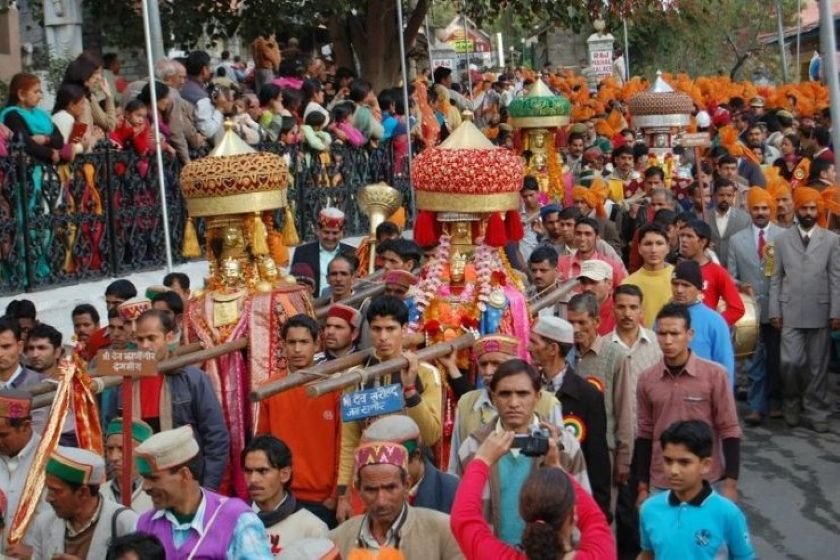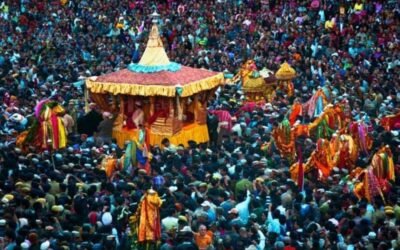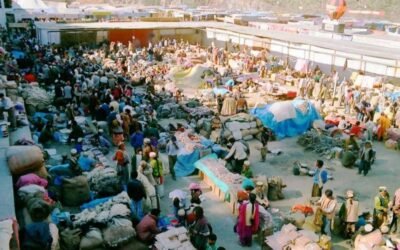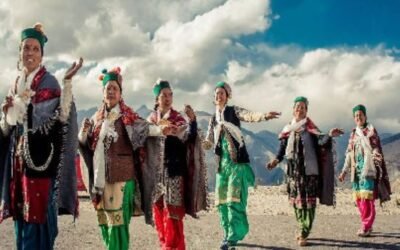📍 Location: Lahauli Villages (notably in Gondhla, Sissu, and Keylong)
📅 Season: February (date varies by village tradition)
A joyful tribute to male childbirth, wrapped in flour bombs, cultural plays, and winter prayers
👶 A Celebration Born from the Hearth
Gochi is a festival unlike any other. It’s celebrated to honor the birth of a male child in the past year—a tradition that intertwines communal pride, agricultural lineage, and ancestral continuity.
🏔️ In remote Lahauli villages, where winters are harsh and mobility restricted, Gochi becomes a symbol of warmth, continuity, and shared celebration, bringing joy to homes nestled under snow.
🔱 Rituals of Joy and Jests
The essence of Gochi lies in its theatrical playfulness and spiritual undertone:
- Simulated Archery & Snow Play: Villagers gather in open courtyards where mock battles are staged with flour pouches and snowballs, symbolizing the challenges and blessings of raising sons
- Male Child Honoring: Families with newborn boys are visited by relatives and neighbors bearing gifts, barley, sweets, and woolen garments
- Village Gatherings: A ceremonial fire is lit, and offerings are made to ancestral spirits and village deities, seeking protection and prosperity
Even elders join in the merriment—laughing, storytelling, and recalling Gochis of past winters.
🎶 Cultural Echoes & Tribal Spirit
Though centered on family joy, Gochi also revives Lahauli folk culture:
- Folk Songs: Sung by older women in Lahauli and Tibetan dialects, narrating tales of birth, blessing, and valley lore
- Winter Attire Parade: Community members showcase traditional woollens, silver jewelry, and embroidered robes handed down through generations
- Mini Plays & Skits: Enacted by youth to tease parents of newborns, often blending humor with ritual
It’s storytelling in snow boots—with giggles and chants bouncing off icy cliffs.
🍛 A Feast of Family and Community
Food plays a comforting role:
- Local Dishes: Thukpa, chhura, buckwheat chapati, and spiced potatoes dominate home kitchens
- Sweet Offerings: Made from roasted barley, jaggery, and butter—served warm in snow-covered courtyards
- Hot Butter Tea (Po Cha): Shared among guests and passersby, keeping spirits and fingers warm
Guests come not just to eat, but to be part of the story.
✨ Why Gochi Still Glows in the Cold
This festival reflects:
- The value of life in harsh terrains
- Communal parenting and village unity
- A celebration of continuity, blessings, and winter resilience
Gochi is less about spectacle and more about soulful belonging—a private joy that echoes across frozen passes.
🧭 Plan Your Experience
To witness Gochi authentically:
- Best Time: February (dates vary; ask local homestay hosts or village elders for timing)
- Where to Go: Villages like Gondhla, Sissu, Jispa, and Keylong
- Travel Tip: Winter gear is essential; roads may be snowed in—arrive in advance and stay in local guesthouses for full immersion
- Cultural Tip: If invited to a family Gochi, bring barley or woolen socks as a respectful gift




